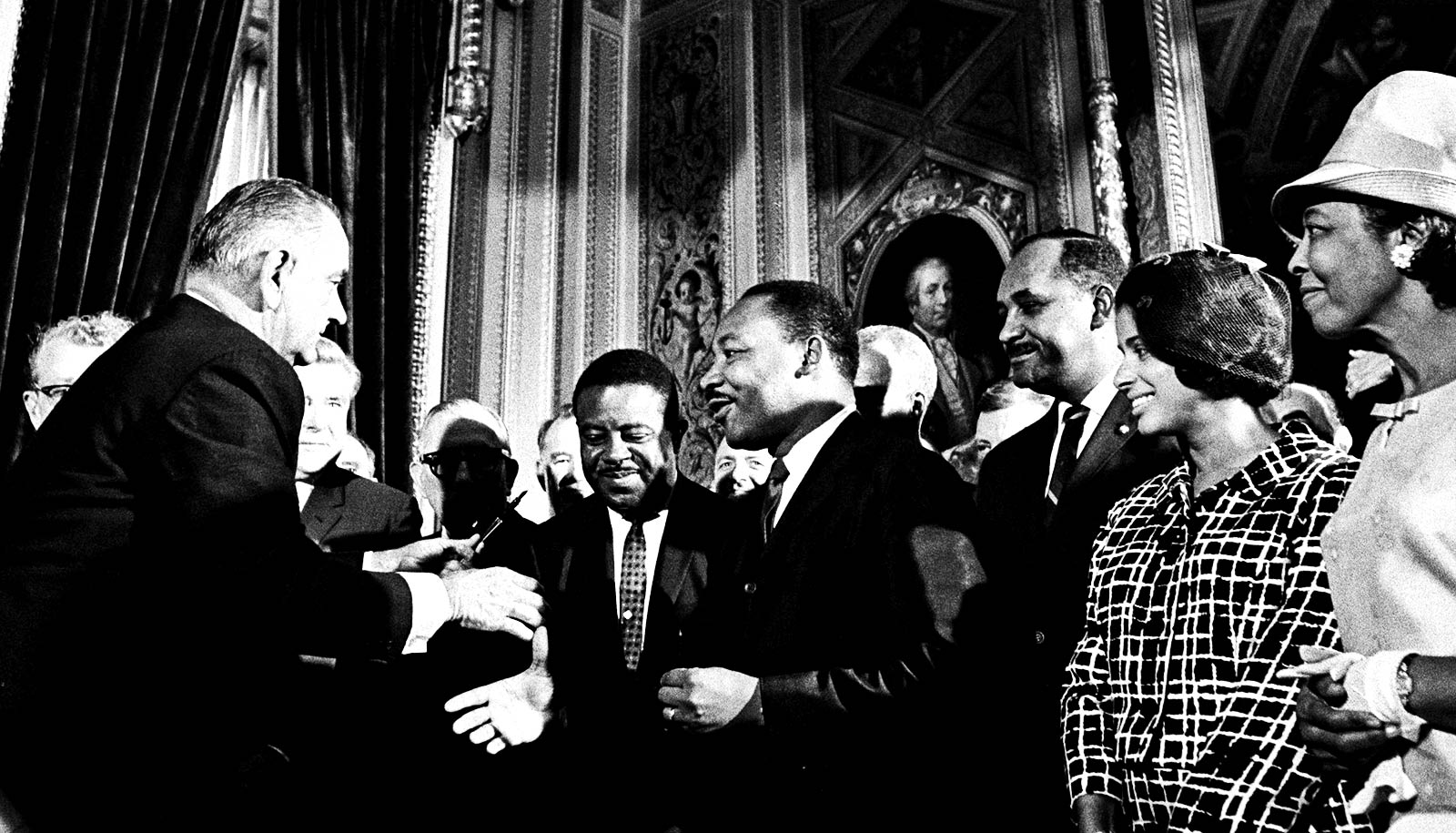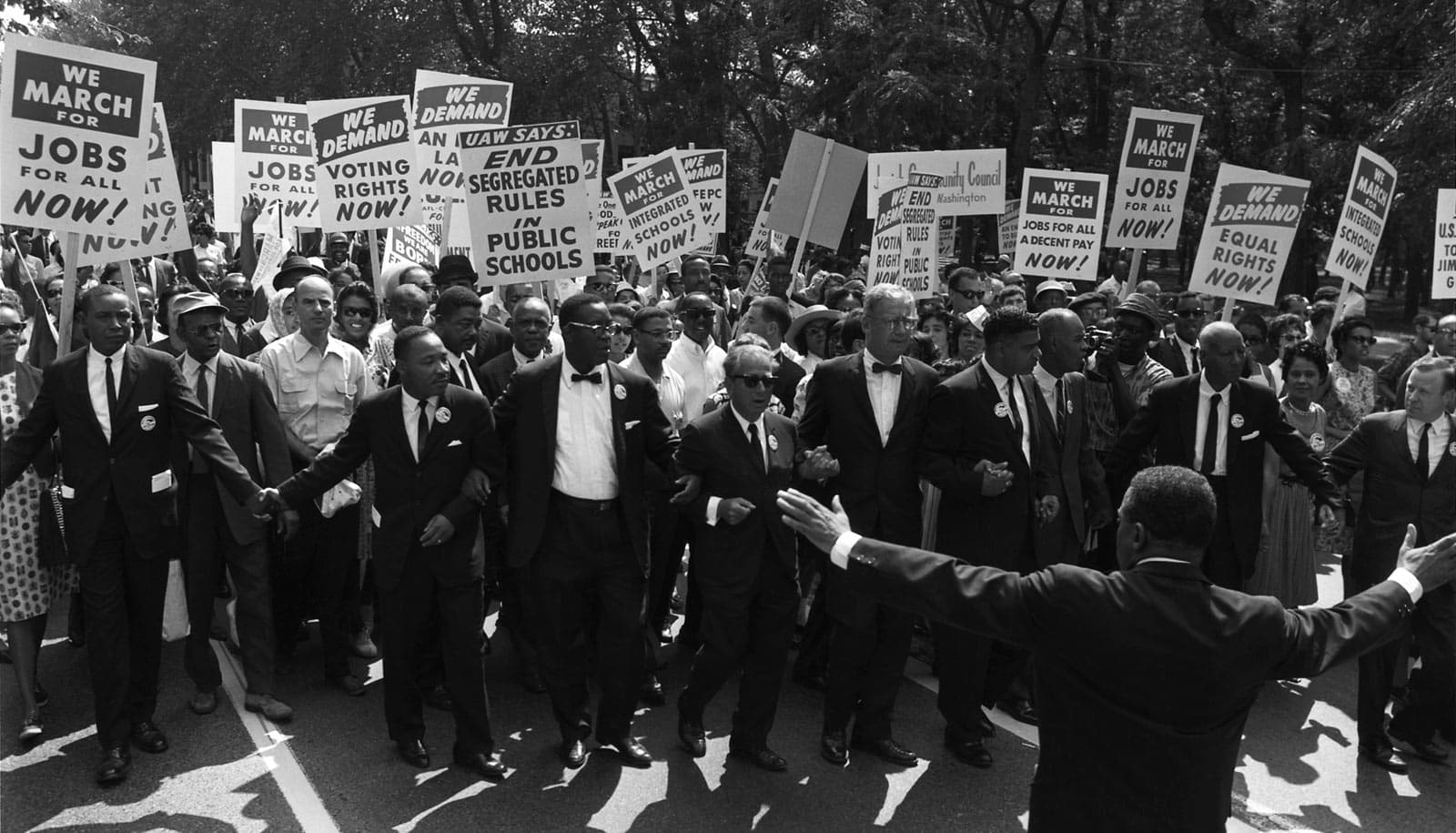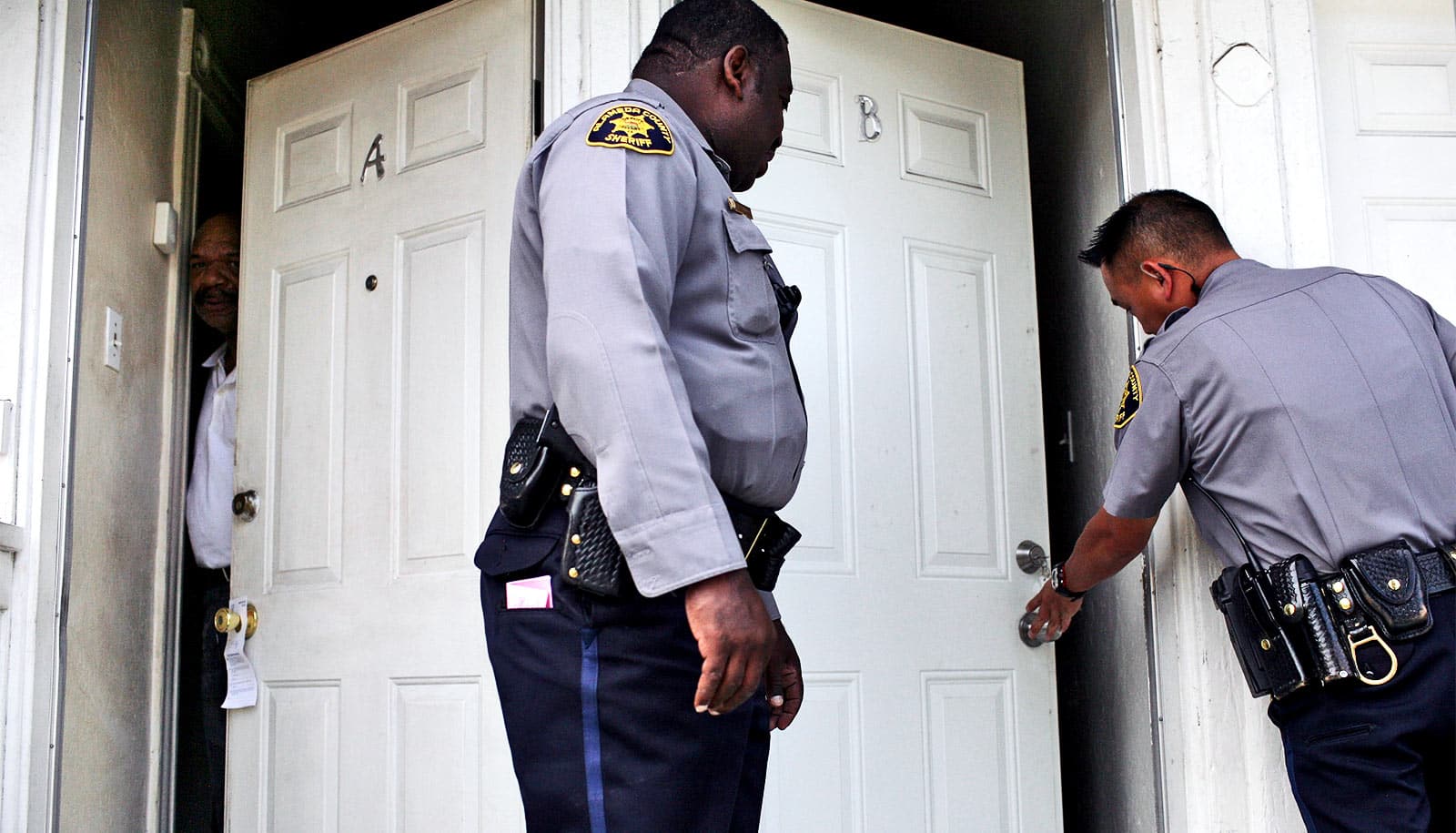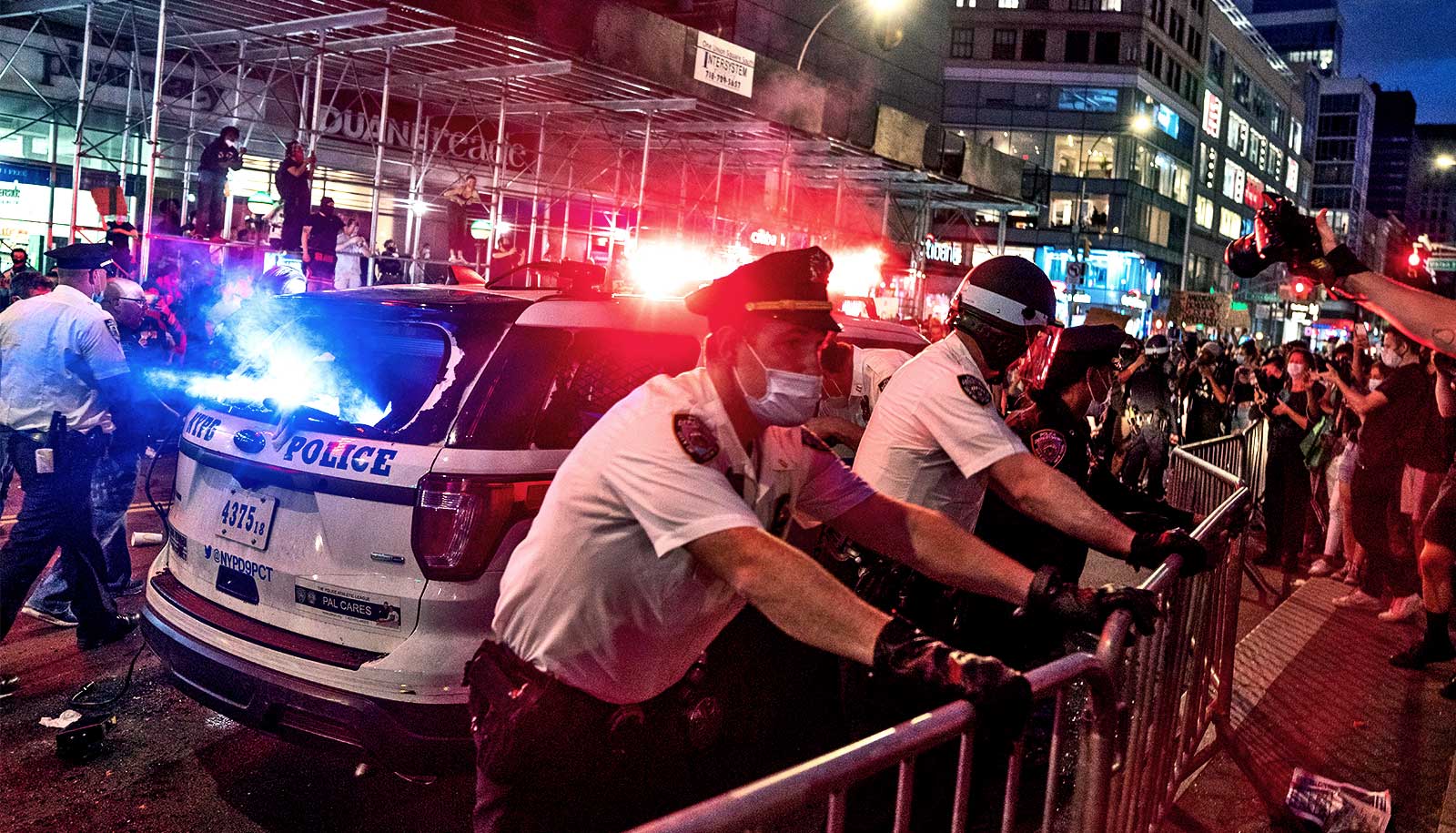The Voting Rights Act of 1965 not only enabled more Black Americans to vote, but also dramatically decreased the rate of Black Americans arrested in many places, according to a new study.
The working paper’s findings suggest that fighting for enfranchisement for historically marginalized groups could play a major role in improving racial equality in the United States.
“…giving Black people a real chance to vote didn’t eliminate all racial bias in arrests, but it improved the situation considerably.”
“We’re certainly not saying that equal voter representation eradicated the maltreatment of Black Americans by police,” says coauthor Brian Knight, a professor of economics at Brown University.
“What we do demonstrate in this paper is that in areas where law-enforcement officials are elected, if everyone has equal access to the vote, it can improve police officers’ treatment of Black Americans,” he says.
The passage of the Voting Rights Act (VRA) in 1965 marked a major turning point in Black Americans’ enfranchisement, Knight explains. Before the act was passed, Black women and men had the right to vote by law but were disproportionately affected by restrictive voting rules in many states, particularly in the South.
Some citizens were barred from voting if they couldn’t pass literacy tests. Others couldn’t register to vote without presenting certain documentation, such as proof of long-term residency, and often had to navigate unorthodox business hours at registration offices.
After the VRA was passed, Knight says, the federal government sent examiners to districts with historically low voter turnout to monitor voting and registration procedures. The VRA also required those districts to obtain permission from the US Department of Justice before changing their voting laws. As a result, the registration and voting process became more straightforward for all residents, and turnout among Black southerners surged between 1960 and 1968.
“It was very hard for Black Americans to vote in many states prior to the passage of the Voting Rights Act because of things like literacy tests that suppressed Black turnout,” Knight says. “The federal government’s oversight following the passage of the VRA played a critical role in ensuring Black Americans were not being turned away from voting and registering to vote.”
The Voting Rights Act and political change
With more representation for Black voters, Knight says, came changes in local political leadership. In many Southern counties where police arrested peaceful Civil Rights protesters en masse, sometimes using violent tactics, Black voters ousted sitting sheriffs and police chiefs and instead threw their weight behind law enforcement leaders who expressed more support for the Civil Rights Movement and racial equality.
The most famous example, Knight says, was in Dallas County, Alabama, site of the Selma march led by Martin Luther King Jr. Voters there famously voted out Sheriff Jim Clark, whose violent arrests of the protesters made national headlines.
Arrest data the researchers analyzed show that in counties where sheriffs were elected officials, where Black Americans made up a significant portion of the total population, and where Department of Justice oversight ensured equal access to the polls, arrest rates for Black Americans fell following the passage of the VRA.
For example, in federally-monitored counties where the Black vote increased by 10 percentage points after the passage of the VRA, from 20% to 30%, post-VRA arrest rates of Black residents were 17% to 23% lower than in counties that were not federally monitored after the VRA passed.
“…for change to occur, we need political leaders to be responsive to the demands of voters.”
The results, Knight says, provide evidence that the act increased accountability of law enforcement leaders and led to major changes in police behavior.
“We highlight some anecdotes in the paper that demonstrate that prior to the VRA, police treated Black Americans particularly poorly,” Knight says. “Our data demonstrate that giving Black people a real chance to vote didn’t eliminate all racial bias in arrests, but it improved the situation considerably.”
Knight says the results of the study demonstrate the inextricable link between equal voting rights and racial equality—an important connection to keep in mind in context of Shelby County v. Holder, a 2013 Supreme Court decision that stripped away key voter protections enshrined in the VRA.
Today, states face considerably less federal accountability, and as a result, Knight says Americans of color have been disproportionately affected by new restrictions on voting, including voter identification laws and limited windows of time in which citizens can register.
Police accountability
The study also highlights the connection between public accountability and fairer practices in law enforcement. While most American sheriffs, who usually patrol highways and unincorporated county land, are elected by voters, a few are instead appointed by county leaders, giving local citizens no input in their selection.
That’s also true of many municipal police chiefs, who are in charge of patrolling within their city limits; voters choose about half of US police chiefs, while mayors or other town officials appoint the other half.
Knight hopes his research drives Americans to investigate voter laws and selection processes of law enforcement leaders in their own districts, demanding change where it is needed.
“What we’re trying to emphasize in the paper is, for change to occur, we need political leaders to be responsive to the demands of voters,” Knight says.
“Greg Champagne, the former president of the National Sheriffs’ Association, made the best possible argument for sheriffs as elected officials, rather than appointed officials: ‘…As opposed to a sheriff being appointed by a mayor or city council and being beholden to that city council, we are beholden to the people. We see our bosses as the citizens that elect us.'”
Knight’s coauthors are from the University of Nottingham.
Source: Brown University



